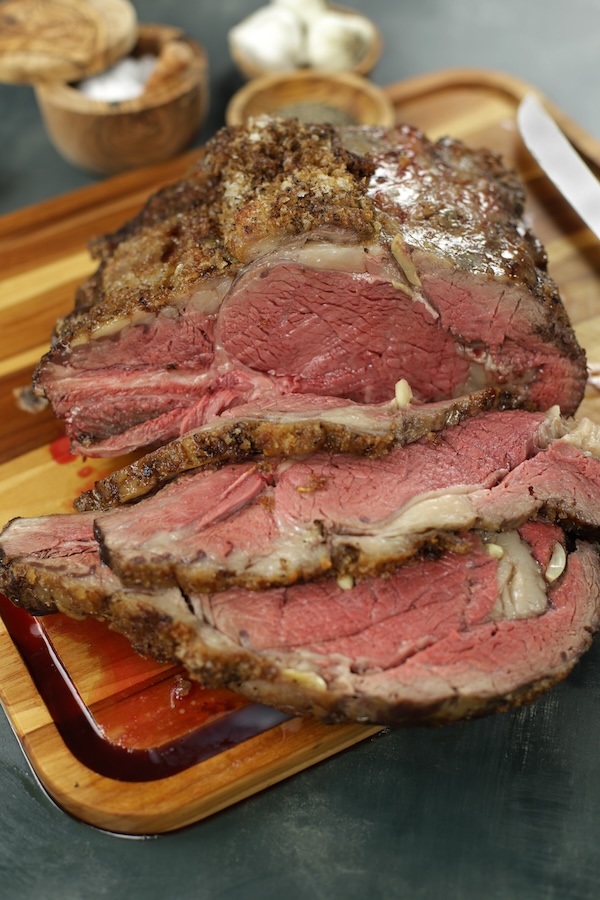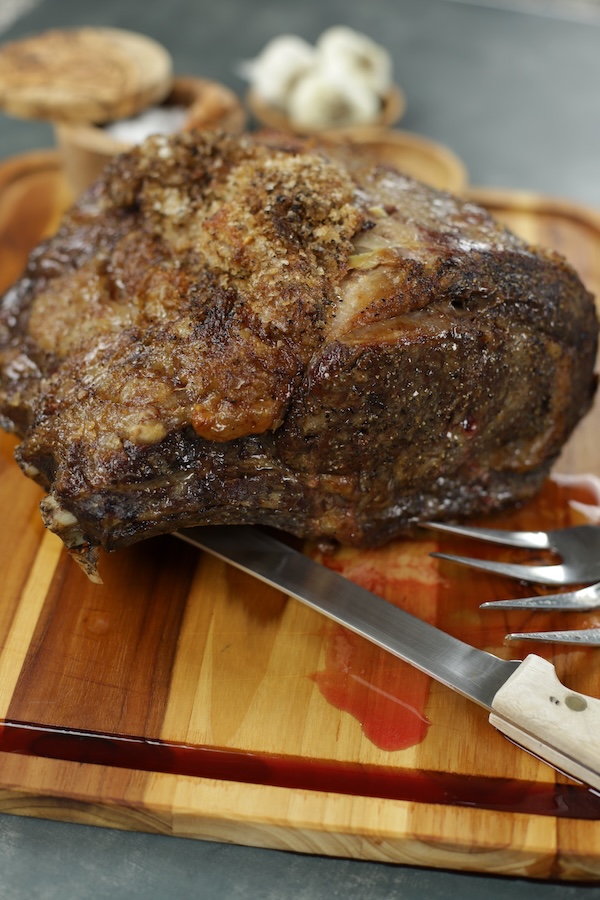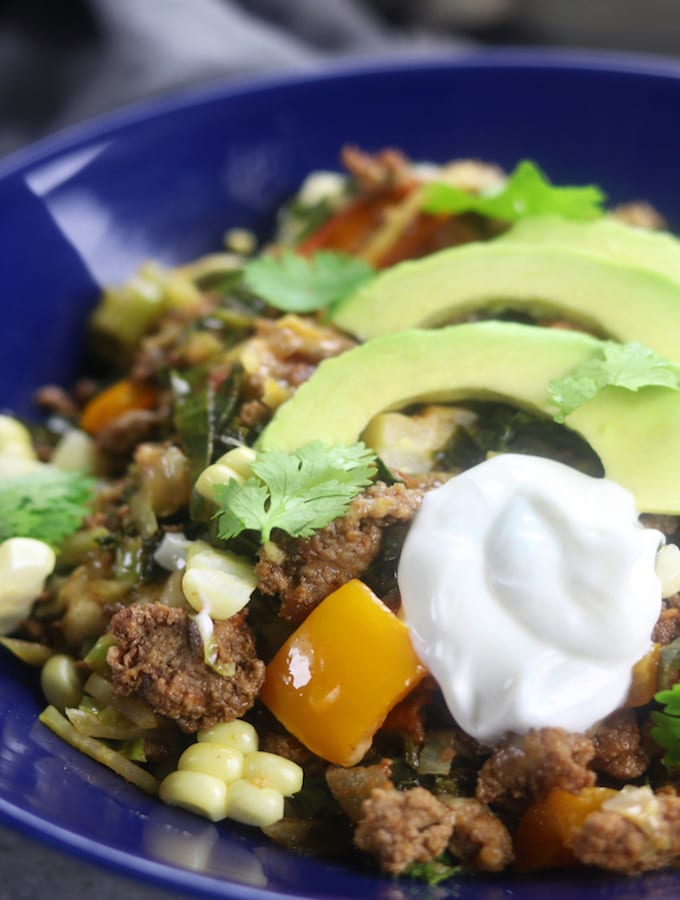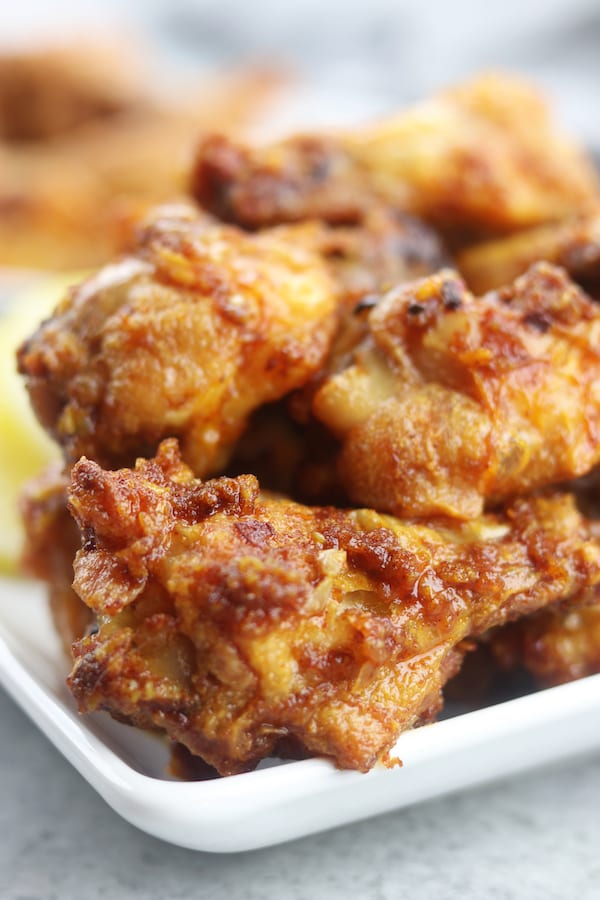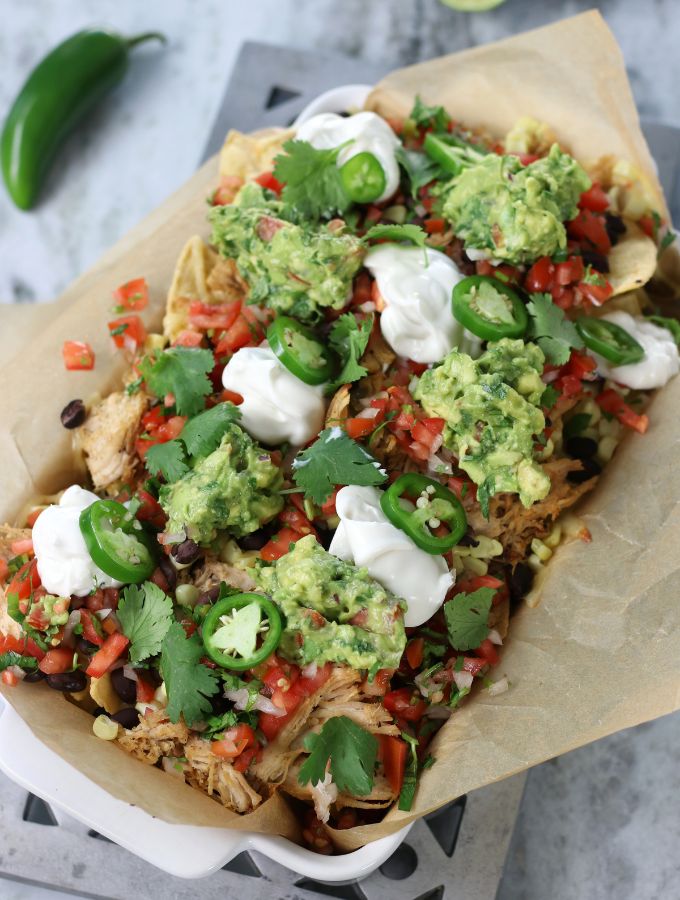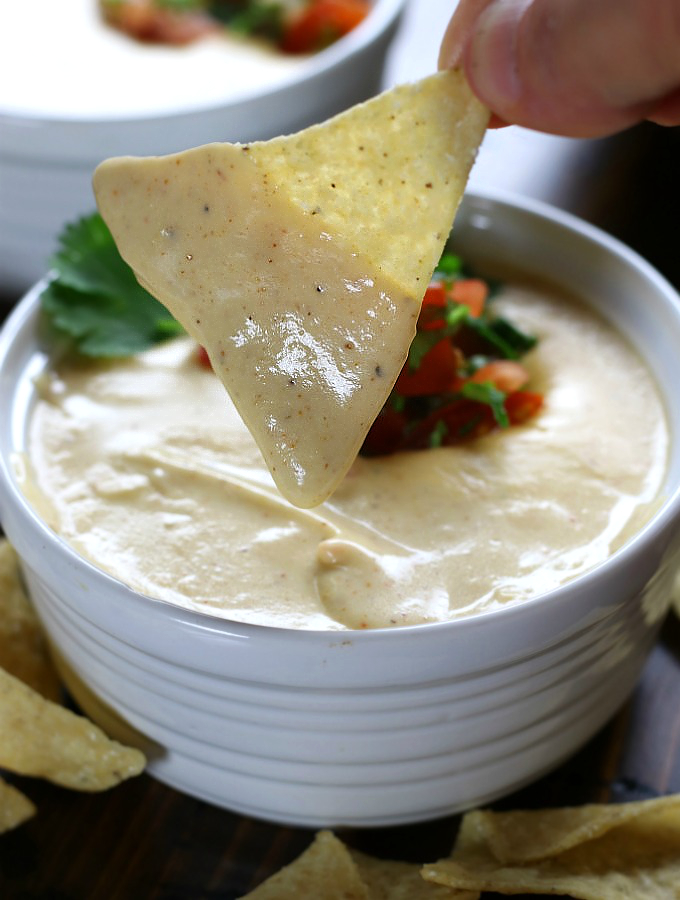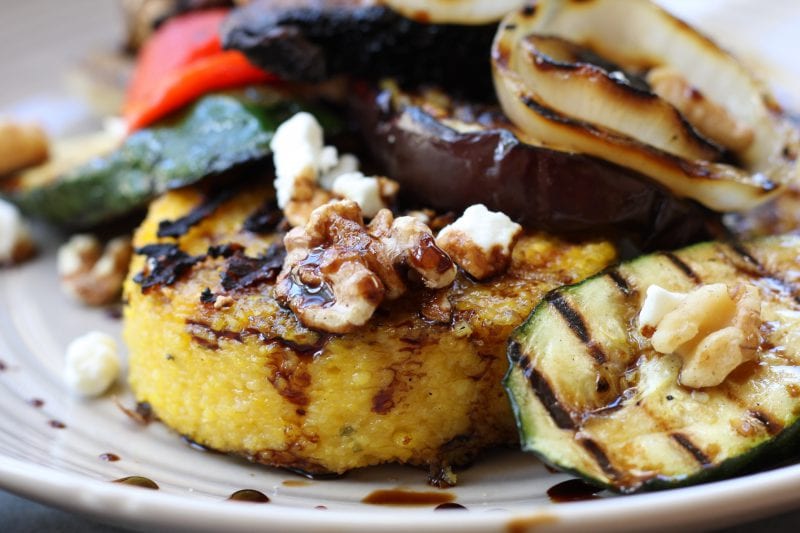Standing Rib Roast
Standing rib roast, also known as ribeye roast (often called prime rib), is a bone-in cut of beef celebrated for its tenderness and rich flavor. This recipe takes it up a notch it by studding the roast with garlic for savory depth, seasoning with high-quality salt to enhance its natural flavors, and using the reverse-sear technique for a perfectly browned crust and melt-in-your-mouth, juicy interior. Perfect for holidays, special occasions, or when you want a restaurant-worthy experience at home.
This post may contain affiliate links, meaning I earn a small commission if you make a purchase—at no extra cost to you. Additionally, AI was used to assist with spelling, grammar, sentence clarity, and creative brainstorming.
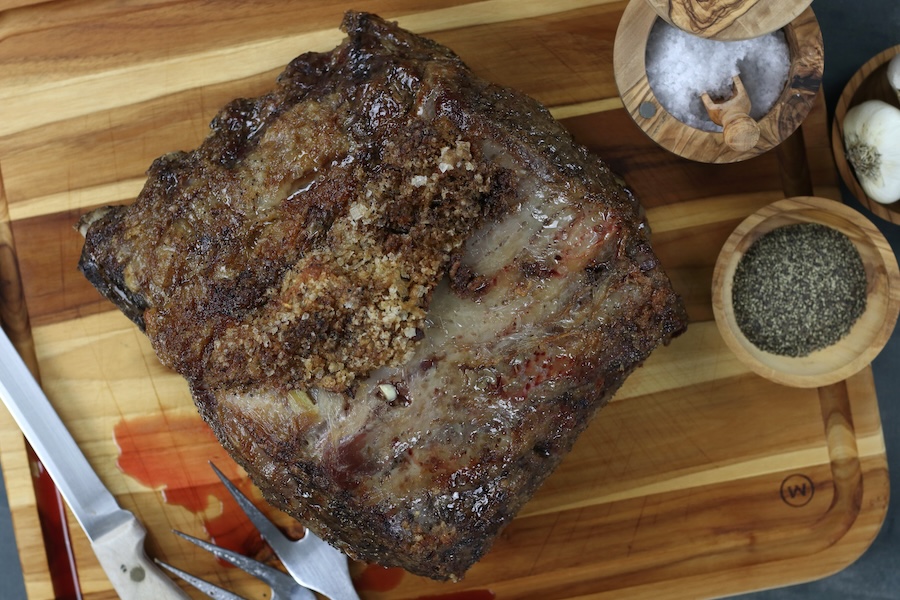
What is a Standing Rib Roast and Why is it so special?
A standing rib roast is a flavorful, tender cut of beef from the prime rib section, with the rib bones intact. The bones not only act as a natural roasting rack but also enhance the meat’s rich flavor and juicy texture as it cooks. Unlike boneless ribeye roasts or ribeye steaks, this roast is prepared whole with the bones, making it an impressive yet surprisingly simple centerpiece for any special occasion.
USDA Grading for Standing Rib Roast
When shopping for a standing rib roast, the USDA grade is your guide to quality. Here’s a quick breakdown to help you make a confident choice:
- Prime– The top-tier grade, with abundant marbling for incredible flavor and tenderness. It’s often pricier and sometimes only available at specialty butchers or high-end stores.
- Choice– A step down from Prime but still excellent. It has good marbling, making it a popular and more affordable option for most home cooks.
- Select– Leaner with less marbling. While it’s the most budget-friendly, it may not deliver the same rich flavor or tenderness.
For a special occasion, Prime or Choice is worth the splurge. If you’re unsure, ask the butcher, they’re there to help!
Reverse-Sear Method For a Perfect Standing Rib Roast
The reverse-sear method is a game-changer for perfectly cooking a roast. It starts by roasting the meat low and slow, which ensures an evenly cooked, tender interior. After resting, the roast gets a quick blast of high heat, creating a beautifully browned and flavorful crust.
Why Reverse Sear Works
This technique gives you precise control over doneness, eliminating the risk of overcooking the edges while the center remains underdone. Plus, the high-heat sear locks in juices and enhances the roast’s rich, caramelized flavor.
How To Reverse Sear In The Oven
Roast your seasoned rib roast at a low temperature (250°F) until it reaches your desired internal doneness. Let it rest at room temperature, loosely covered with aluminum foil. Meanwhile, increase the oven temperature to 500°F–550°F. After 30 minutes of resting, return the roast for a final 10–15 minutes to create a beautifully golden-brown crust. The result? Juicy, tender beef with a stunning, restaurant-quality finish every time.
Tools Needed
- Roasting Pan– A high-quality roasting pan is a must-have. Its sturdy design prevents warping, while heavy-duty handles make it easy and safe to move. The thick construction ensures even cooking, and the deep pan with a rack catches drippings for basting or making sauces.
- Roast Lifters– Using this tool makes cooking a standing rib roast easier by allowing you to lift the roast effortlessly and safely to the cutting board without damaging its beautiful crust.
- Carving Board– A meat cutting board with a juice groove is essential for a standing rib roast, as it catches flavorful drippings and provides a stable surface for clean, precise carving.
- Meat Carving Knife– A sharp meat carving knife helps to ensure smooth, precise slices without tearing the meat, preserving its juicy texture and presentation.
- Probe Thermometer– A probe meat thermometer ensures precise monitoring of the roast’s internal temperature, helping you achieve perfect doneness without overcooking. (Note: I do not have one at the moment that I highly recommend.)
Ingredients Needed
Creating an irresistibly tender and flavorful Standing Rib Roast doesn’t require a laundry list of ingredients or hours of marinating. With just a handful of key seasonings and the natural richness of the roast itself, you can achieve a show-stopping centerpiece that’s simple, elegant, and utterly delicious.
- Standing Rib Roast– The star of the show, known for its rich marbling and tender texture.
- Garlic Cloves– Fresh garlic slivers infuse the meat with rich, savory flavor, enhancing its aroma as it roasts.
- Salt– Use Kosher Salt or Maldon’s Sea Salt for their larger crystals, which stick to the roast better, ensuring even seasoning and a well-developed crust. These salts also draw out moisture slightly, enhancing the meat’s tenderness.
- Black Pepper– Adds a subtle, peppery kick to balance the richness of the roast.
- High Heat Oil– A neutral, high-smoke-point oil like avocado or grapeseed is essential for achieving a golden, crisp sear without smoking while also helping the seasoning adhere evenly to the roast.
Guide to Picking the Right-Sized Roast
For a bone-in roast, plan about 1 pound per person; for boneless, aim for ¾ pound. If you want generous portions or leftovers, add a bit more. Smaller groups can go with 2 ribs, while larger gatherings may need 3 to 4 ribs. Not sure? Your butcher can help you pick the perfect size, just let them know how many people you’re feeding.
How To Make {Simplified Instructions}
Prepare the Roast
- Let the roast sit at room temperature for 1 hour.
- Peel and slice garlic into slivers, then insert into small incisions made all over the roast.
- Pat dry, coat with oil, and season with salt and pepper.
- Insert a thermometer into the center, avoiding bones, and place bone side down in a roasting pan with or without a rack.
Cook the Roast
- Roast at 250°F until the internal temperature reaches 118–120°F (about 1 hour per bone).
Rest the Roast
- Remove from oven, tent with foil, and rest for 30 minutes. The temperature will rise to 128–130°F.
Reverse Sear
- Heat the oven to 500–550°F and roast for 10–15 minutes until browned.
Carve and Serve
- Remove the bones, slice against the grain, and serve.
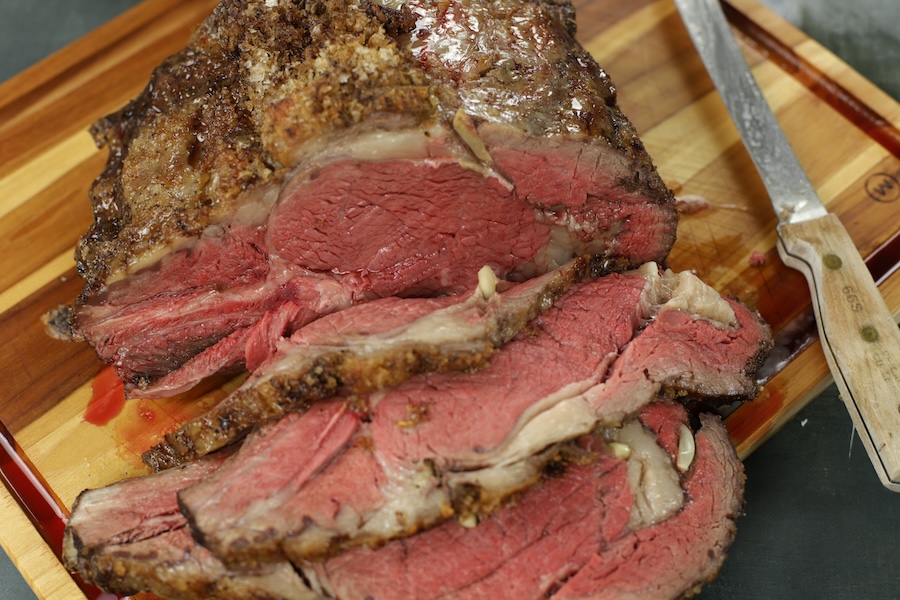
Frequently Asked Questions
Do I need to bring the roast to room temperature before cooking?
There’s no need to let the roast come fully to room temperature, which can take hours. However, letting it sit out for an hour has key benefits: it takes the chill off for more even cooking and makes it easier to stud with garlic slivers. This simple step ensures a tender, flavorful result without unnecessary waiting.
How do you know when the roast is cooked to your desired doneness?
The most reliable way to ensure your roast reaches your desired doneness is by using a meat thermometer. Most people prefer prime rib cooked to medium-rare or medium. For medium-rare, cook the roast to 118–120°F during the initial slow roast. After the reverse sear, the internal temperature will rise to about 125°F. For medium, aim for 133–135°F in the first cooking session, which will result in a final temperature of 140°F after the reverse sear.
Does this method require resting after being cooked?
This method doesn’t require an additional resting period before slicing because the roast rests after the slow roasting phase. During this time, the juices redistribute, ensuring the meat remains tender and flavorful. The reverse sear is a quick, high-heat finish that locks in those juices without needing another rest, so it’s ready to slice and serve immediately.
Should sauce or gravy be served with this roast?
Prime rib is traditionally served with au jus or horseradish, but some enjoy it with gravy or simply on its own. Au jus is a light, broth-like sauce made from the roast’s natural drippings (or stock) and lightly seasoned to enhance its flavor. Gravy, in contrast, is thicker and heartier, made by whisking meat drippings with flour or another thickener for a rich, velvety texture. Ultimately, the choice comes down to personal preference.
What are the desired internal temperatures for doneness?
- For Medium-Rare– During the first cook (slow roast), bring the internal temperature to 118–120°F, which will rise to 125°F after the reverse sear.
- For Medium– During the first cook (slow roast), bring the internal temperature to 133–135°F, finishing at 140°F after the reverse sear.
Can this same recipe be used for a boneless prime rib roast?
Yes, the same recipe can be used for a boneless prime rib roast with a few minor adjustments. Since a boneless roast cooks slightly faster than a bone-in roast, you’ll want to monitor the internal temperature closely to avoid overcooking. Additionally, using a roasting rack can help elevate the boneless roast for even heat circulation. Otherwise, the seasoning, reverse sear method, and overall approach remain the same, delivering equally tender and flavorful results.
Is a roasting rack necessary?
A roasting rack isn’t essential for a standing rib roast because the bones naturally lift the meat, allowing heat to circulate evenly. However, if you’re using a boneless roast or want cleaner drippings for au jus or gravy, a rack can help. It keeps the meat out of its juices and promotes even cooking with a beautifully browned exterior. For bone-in roasts, it’s optional but can be handy.
What to Serve with a Standing Rib Roast
Butternut Squash Mac and Cheese
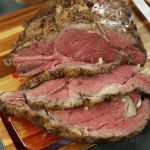
Standing Rib Roast
Ingredients
- 1 standing rib roast *3-4 bones, 7-10 pounds serves 7-10 people, see Note #1 below
- 4-8 large garlic cloves *peeled and cut into slivers, see Note #2 below
- 2 to 4 tablespoons kosher salt or Maldon sea salt flakes *1 tablespoon per rib
- 1/2 to 1 tablespoon black pepper
- 1 to 2 tablespoons high heat oil *I used avocado oil
Instructions
Prepare Roast
- Remove the rib roast from the refrigerator and let it sit at room temperature for 1 hour. This allows for more even cooking and makes it easier to stud the meat with garlic.
- Peel the garlic cloves and cut them into slivers. (These will be used to stud the roast.)
- Pat the rib roast dry with paper towels, then use a small, sharp knife to make 1-2 inch deep incisions all over the roast, about 1-2 inches deep. Widen each incision slightly with your finger, then insert a garlic sliver. Repeat until the entire roast is studded with garlic.
- Drizzle the roast with high-heat oil to coat evenly, then season with salt and pepper.
- Insert a probe thermometer into the center of the roast, ensuring it does not touch any bones. Place the roast bone side down in a roasting pan, using a roasting rack if desired.
Cook Roast
- Place the roasting pan on the mid to lower rack of a cool oven. Set the oven to 250°F and roast until the center of the roast reaches an internal temperature of 118℉-120℉. This will take approximately 1 hour per bone. See Note #3 below.
Rest Roast
- Remove the roast from the oven and cover it loosely with aluminum foil. Allow the roast to rest for 30 minutes. The internal temperature should rise to approximately 128℉-130°F for medium-rare.
Reverse Sear Roast
- Increase the oven temperature to 500℉-550°F (depending on how high your oven goes). Once heated, return the roast to the oven and cook until the exterior is browned, about 10-15 minutes. There is no need to rest the roast after this final step.
Carving Instructions
- Place the roast on a sturdy cutting board. Using a sharp carving knife, carefully slice along the bones to separate them from the meat. Once the bones are removed, carve the roast into thick slices, cutting against the grain for maximum tenderness. Serve immediately and enjoy!
Notes
- 2 Rib Roast– Use 4 garlic cloves, 2 tablespoons salt, 1 teaspoon black pepper and 1 tablespoon oil.
- 3 Rib Roast– Use 6 garlic cloves, 3 tablespoons salt, 1/2 tablespoon black pepper and 1 1/2 tablespoons oil.
- 4 Rib Roast– Use 8 garlic cloves, 4 tablespoons salt, 1 tablespoon black pepper and 2 tablespoons oil.
- For Medium-Rare– During the first cook (slow roast), bring the internal temperature to 118–120°F, which will rise to 125°F after the reverse sear.
- For Medium– During the first cook (slow roast), bring the internal temperature to 133–135°F, finishing at 140°F after the reverse sear.

